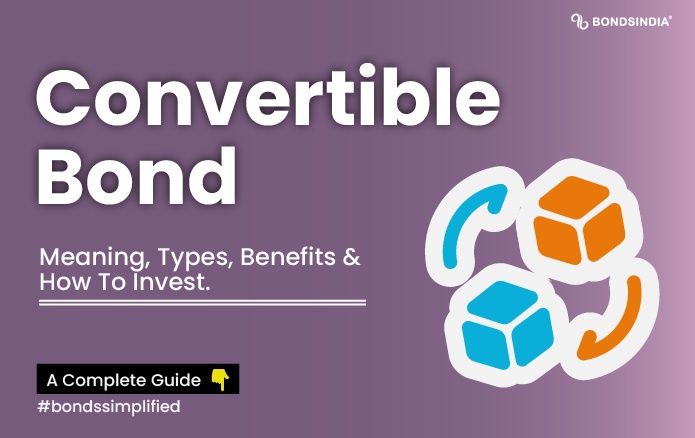Are you looking for an investment that offers the best of both worlds? Look no further than convertible bonds! These unique securities offer a blend of features from traditional bonds and stocks, offering investors the potential for growth while still providing fixed income. In this post, we'll compare convertible bonds to their more traditional counterparts and explore why they may be a smart addition to your portfolio. Join us as we dive into the world of convertible bonds!
Introduction to Convertible Bonds
A convertible bonds is a type of bonds that can be converted into shares of stock in the issuing company. Convertible bonds are usually issued by companies that are looking to raise capital, and they offer investors the chance to convert their bonds into equity in the company.
Traditional bonds are issued by companies and governments to raise money for long-term projects. They typically have a fixed interest rate and maturity date, and they cannot be converted into equity.
Stocks represent ownership in a company, and shareholders are entitled to a portion of the company's profits. Stocks can be bought and sold on stock exchanges, and their prices can fluctuate based on market conditions.
How Convertible Bonds Differ from Traditional Bonds and Stocks
Convertible bonds are a type of debt security that can be converted into common stock or cash, at the option of the holder, typically after a predetermined period of time. They are generally issued by companies looking to raise capital and offer investors the potential for increased returns if the underlying stock price increases.
Traditional bonds are debt securities that obligate the issuer to make periodic interest payments and repay the principal amount of the loan at maturity. They do not offer investors any opportunity to participate in the upside potential of the issuer's business.
Stocks represent ownership in a company and entitle shareholders to a portion of the profits generated by the business. Unlike bonds, they do not come with any guaranteed income stream but tend to offer greater upside potential. Convertible bonds combine features of both traditional bonds and stocks and can offer investors an attractive way to grow their portfolio.
Advantages of Investing in Convertible Bonds
Convertible bonds offer investors a number of advantages over traditional bonds and stocks. For one, convertible bonds tend to be less risky than stocks, making them a good choice for conservative investors. Additionally, convertible bonds offer the potential for higher returns than traditional bonds. Finally, convertible bonds can be an attractive investment during periods of market volatility, as they provide downside protection while still offering the potential for upside gains.
Disadvantages of Investing in Convertible Bonds
There are several disadvantages to investing in convertible bonds. First, the interest rate on a convertible bond is usually lower than the interest rate on a traditional bond. This means that you will earn less income from your investment. Second, if the company issuing the convertible bond goes bankrupt, you may lose some or all of your investment. Third, if the stock price of the company issuing the convertible bond falls, you may lose money on your investment. Finally, if interest rates rise, the value of your convertible bond may fall.
Comparison of Risk and Return between Convertible Bonds, Traditional Bonds, and Stocks
When it comes to investment opportunities, there are a lot of different options to choose from. For the purpose of this article, we will compare the risk and return between convertible bonds, traditional bonds, and stocks.
Convertible bonds are a type of debt security that can be converted into shares of common stock in the issuing company. They typically have a lower interest rate than traditional bonds and are considered to be less risky.
Traditional bonds are fixed-income securities that make periodic interest payments until they mature. They are considered to be relatively safe investments, but their returns are often lower than other types of investments.
Stocks represent ownership in a company and give shareholders the right to vote on corporate matters and receive dividends. They tend to be more volatile than bonds, but can offer higher returns over time.
So, which is the better investment? It depends on your goals and tolerance for risk. If you are looking for stability and income, then traditional bonds may be the way to go. However, if you are willing to take on more risk in exchange for the potential for higher returns, then stocks may be a better choice. Convertible bonds fall somewhere in between these two extremes, offering some downside protection while still providing the opportunity for upside potential.
When to Consider Investing in Convertible Bonds
Convertible bonds are a type of investment that can offer investors both the stability of fixed-income investments and the potential for capital appreciation of equity investments. As such, convertible bonds can be an attractive option for investors who are seeking to diversify their portfolios.
However, there are a few things to keep in mind before investing in convertible bonds. First, it is important to understand the difference between convertible bonds and traditional bonds. Traditional bonds are debt instruments that pay periodic interest payments and mature at a predetermined date, at which point the face value of the bond is returned to the investor. Convertible bonds, on the other hand, are debt instruments that can be converted into shares of stock at some point during their lifetime.
Second, it is important to consider the risks associated with convertible bonds. Convertible bonds are typically more volatile than traditional bonds and may be subject to greater price fluctuations. Additionally, if the underlying stock performs poorly, investors may lose money on their investment.
Finally, it is important to consult with a financial advisor to determine whether investing in convertible bonds is right for you. Your financial advisor can help you understand the risks and potential rewards associated with this type of investment and make sure that it aligns with your overall financial goals.
Conclusion
In conclusion, convertible bonds are a unique and attractive investment option that offer the potential for higher returns than traditional bonds. They also provide investors with more flexibility in terms of how they manage their investments. While there are some risks associated with investing in convertible bonds, such as liquidity concerns, these can be mitigated by proper due diligence. Overall, convertible bonds may be an attractive option for those looking to diversify their portfolios and potentially maximize returns while minimizing risk.


No comments yet